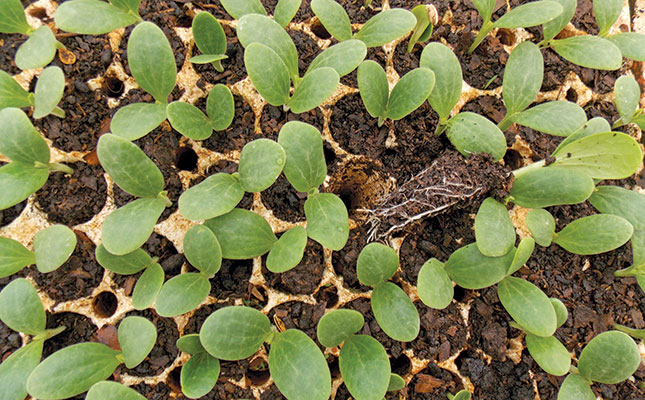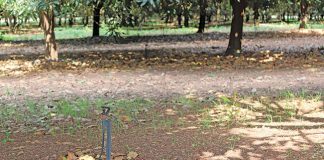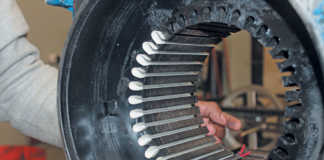
Photo: Bill Kerr
In the case of pumpkins and squashes, however, this strategy doesn’t always work as these types struggle after transplanting.
I use transplants for convenience in my breeding programme, but find that volunteer plants from seed from the previous season’s unharvested fruit often overtake the transplanted seedlings.
The problem is that root ‘pruning’ in the seedling plugs sets the plant back. If there is too much leaf growth, the leaves rapidly extract moisture from the plug medium.
Due to the different composition of the medium and the soil, moisture does not move readily from the soil into the plug by capillary action. The young plants therefore need frequent light irrigation to keep them alive until enough roots enter the soil. This takes longer with pumpkins and squashes than a crop such as cabbage.
If you have to use seedlings, transplant them as early as possible. Usually this is at the first signs of true leaf emergence. At this stage, very little root ‘pruning’ has taken place as the roots are just starting to go through the drainage cavity at the base.
Pricy melon seeds
Melons and watermelons are often planted as seedlings as the seed can be very expensive. Hybrid watermelon seed is particularly costly, and is sometimes also grafted onto a rootstock. This makes seedlings the only way to go.
Cheap, open-pollinated varieties are usually sown directly. When planting seed directly into the soil, bear in mind that you are planting a rodent delicacy. These animals are able to detect exactly where the seeds are and can do enormous damage in just one night.
If rodents are a problem, use an owl-safe bait before planting. (Owls, of course, help to keep rodent numbers down.)
Speeding up the production process
Get a head-start by soaking the seeds overnight, then wrapping them in a damp cloth. Store in a warm place until the roots are just about to protrude.
Plant the seeds into moist, but not soaked soil, and little or no irrigation will be necessary before emergence. This means planting by hand, but it’s worth it. If the seed germination rate is low, you can select and plant only those seeds that have started germinating. In this way, you will be able to plant the land uniformly to a full stand.
Weed control
For weed control, apply Dual herbicide (from Syngenta) two weeks before planting and irrigate well. After planting and just before emergence, apply a light dose of paraquat. This will kill off any weeds not controlled by the Dual. Paraquat affects only germinated plants.
If the soil is not disturbed, very few weeds will emerge after this treatment.
Bill Kerr is a vegetable specialist and a breeder of a range of vegetables.










